Last week, voters went to the polls (well, about half of them mailed in absentee ballots) in Minnesota to set up races for November. While the Presidential primary (first in the state since 1992) was on Super Tuesday in March, the state level primaries are still in August. The overall turnout was lower than 2018, though in 2020 there were no competitive statewide primaries. The large majority of ballots cast were on the DFL side, though that has been a recurring happening in Minnesota primaries and is an extremely poor indicator of November performance.
The marquee race that had the most national attention was in the 5th Congressional District centered in Minneapolis. Incumbent Ilhan Omar beat back a challenger from Antone Melton-Meaux by about 20 points. Earlier this summer, the Omar campaign seemed to be caught a bit off guard by Meaux’s strong fundraising numbers that led to Meaux dominating the airwaves early this summer. Endorsements from Pelosi and the full backing of the state DFL helped Omar win by a comfortable margin in the end. Her margin growing after election night with late absentee ballots support the assertion that the race was closer at the beginning of early voting when Meaux dominated the airwaves than it was by election day. The unique dynamic in this race was how Omar was essentially the “establishment” candidate with the full backing of both the state and national establishment. While her voting record has not exactly been party-line, she did back Pelosi for Speaker in 2019 which may have had some influence in Pelosi deciding to make a public endorsement of Omar.

Omar improved most over 2018 in Minneapolis, primarily in SD-59 where 2018 candidate Bobby Joe Champion still represents in the State Senate. His support was quite centralized in his district. While he only pulled 2.83% districtwide, he hit 14.23% in his home Senate district. His voters from 2018 seem to have largely gone with Omar in 2020. Omar’s weakest areas were in the area around Bde Maka Ska and in many of the suburban parts of the district such as Spring Lake Park, Edina, New Hope and Golden Valley. These areas largely voted for Kelliher in 2018.
In the 7th Congressional District that encompasses much of western Minnesota featured a Republican primary. Michelle Fischbach who was a former State Senator who ascended to the role of Lieutenant Governor briefly after Tina Smith became Senator (though she resisted taking the role for a while which was not without controversy), was the frontrunner endorsed by the party earlier this year. Fischbach ended up winning with 58.8% of the vote over 2016 and 2018 nominee David Hughes at 22.2% and Noel Collis at 15.1%. There were some late rumblings that Collis may be gaining on Fischbach which prompted the state GOP to file a campaign finance complaint against Collis. Fischbach will take on longtime DFL Congressman and Chair of the House Agriculture committee, Collin Peterson. This is one of 3 competitive Congressional races in Minnesota this cycle. The implications here are significant as any House Democrat replacing Peterson as Agriculture Committee Chair would be from a district much less rural than Peterson’s 7th district. There are also implications for 2022 which could find Fischbach and Emmer redistricted into the same Congressional district. Since Emmer drafted Fischbach to run in 2020, it is widely presumed here in Minnesota that one of the two plans to run for Governor in 2022 rather than Congress. At the moment, the other most likely candidate for the GOP in 2022 for Governor is Mike Lindell (more commonly known as the “My Pillow Guy”).
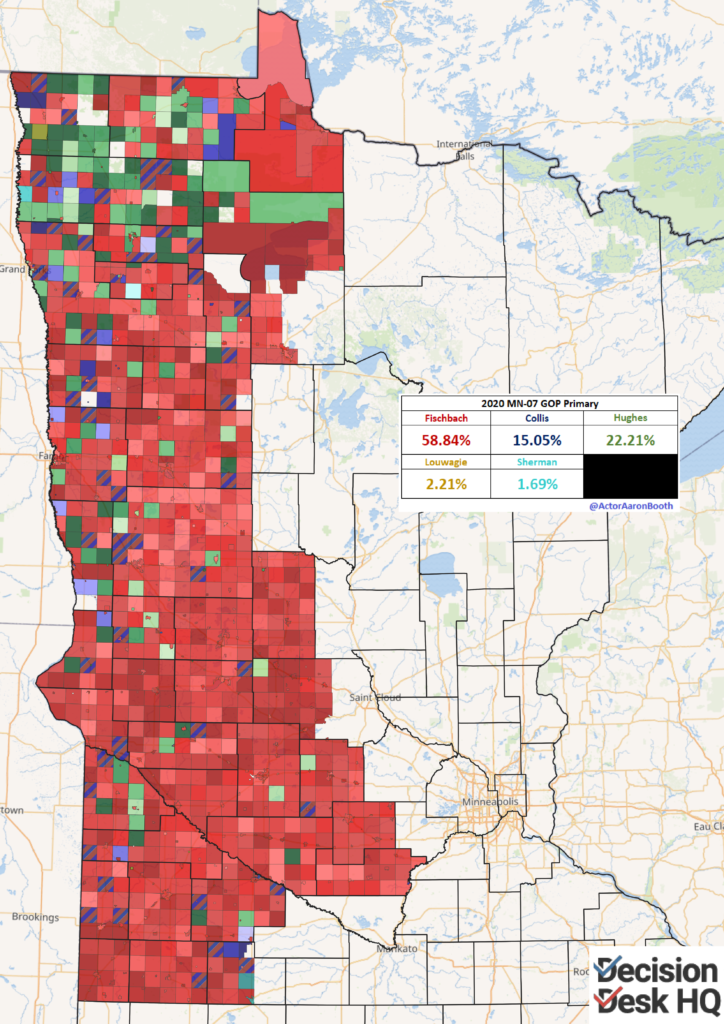
In the 4th district, there was a highly competitive race for the Republican primary. While the race will not be competitive in the fall, the GOP did endorse Sia Lo in the primary. The winner of the primary, however, was Gene Rechtzigel. Unlike Lo, Rechtzigel does not appear to have filed anything yet this cycle with the Federal Election Commission. There was not much of a pattern to a lot of the precinct level results in this race, though Rechtzigel did very well in his hometown of Newport and Lo overperformed a bit in the precincts with a larger share of Hmong residents.
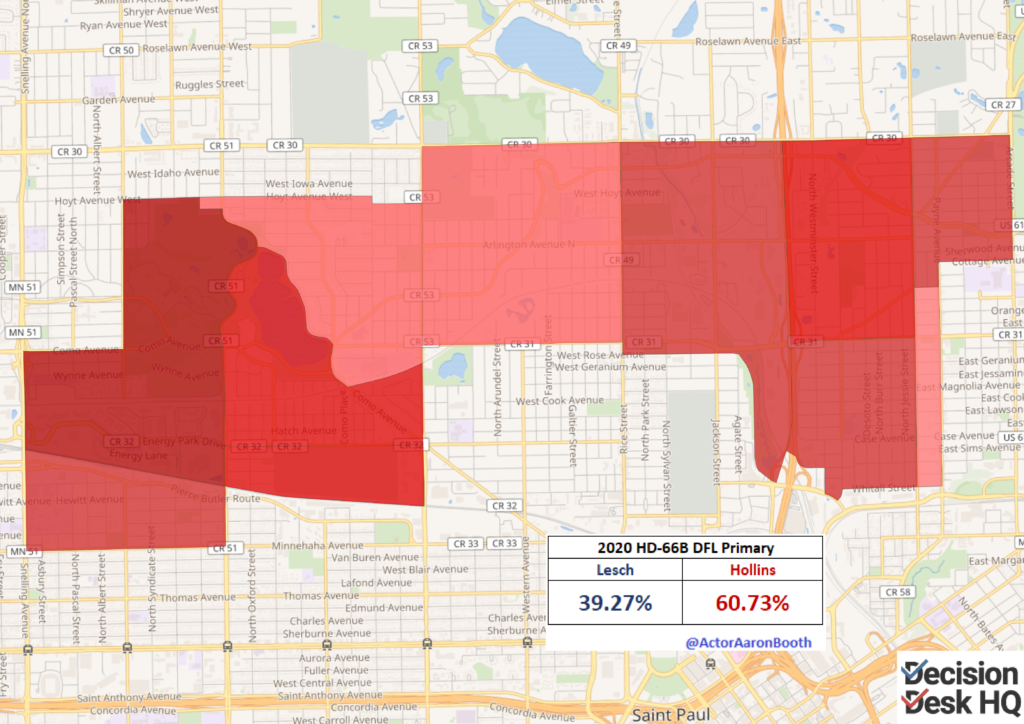
Down-ballot there were a series of primaries that featured DFL incumbents who lost their party’s endorsement earlier this year for reelection. Minnesota uses a hybrid system where candidates seek their party endorsement through the caucus and convention system earlier in the spring followed by a binding primary in August. The parties are only able to support candidates that they have endorsed, so the system results in the party infrastructure campaigning against their own incumbents when they lose the endorsement. The incumbents to lose the endorsement this cycle all lost the August primary: Raymond Dehn (HD-59B in Minneapolis), Jeff Hayden (SD-62 in Minneapolis) and Erik Simonson (SD-07 in Duluth). Notably, Jeff Hayden represented the State Senate district where George Floyd was killed in May. Hayden lost the primary, though he did carry the precinct where George Floyd was killed.
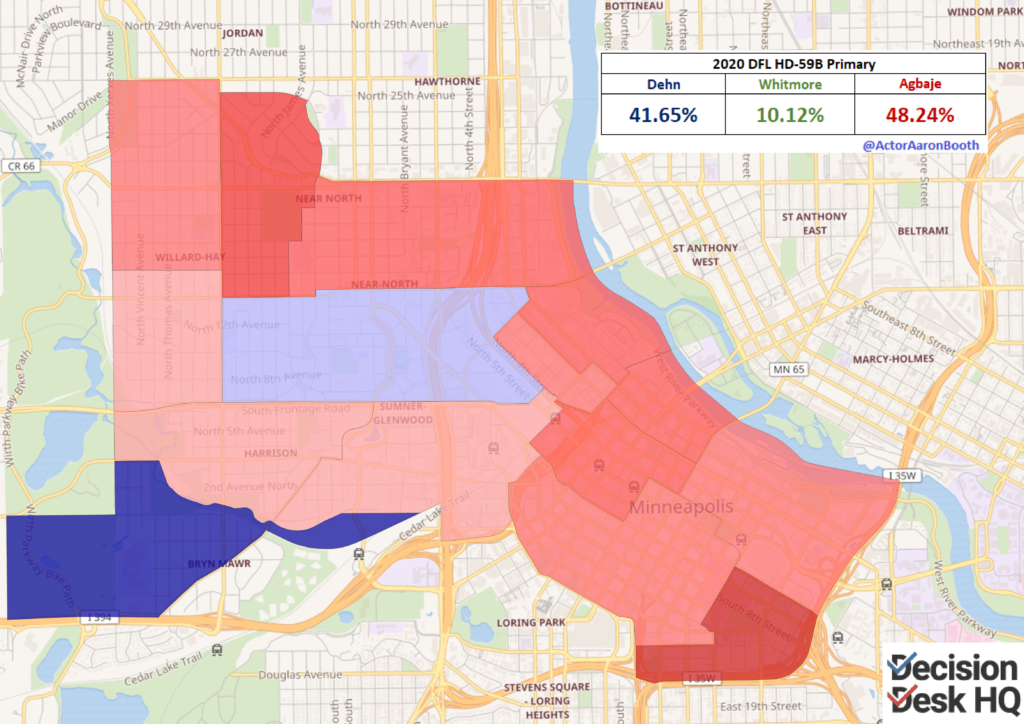
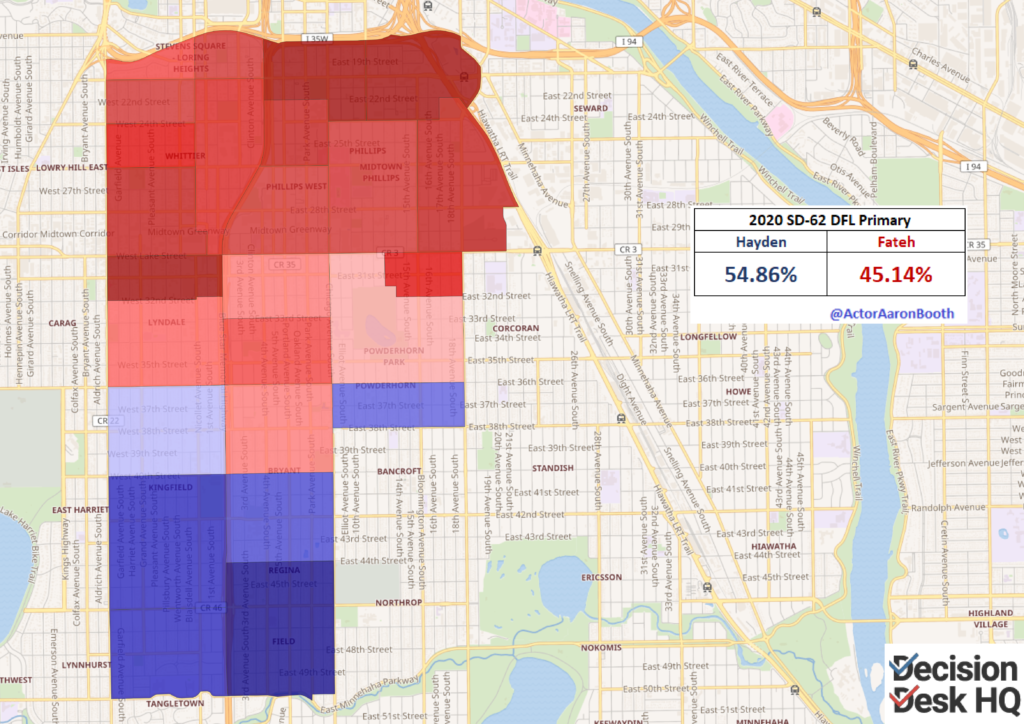

The only DFL incumbent to win the endorsement and go on to lose the primary was John Lesch (HD-66B in St. Paul). Lesch only narrowly won the endorsement and had some baggage. Lesch ran into campaign finance violations a few years ago during his run for Attorney General and has recently faced a defamation suit that he unsuccessfully sought to have dismissed due to legislative immunity.

In an open race in Moorhead (HD-04A), the DFL endorsed candidate Heather Keeler won the primary by nearly a 2:1 margin in a win for the more liberal wing of the party.
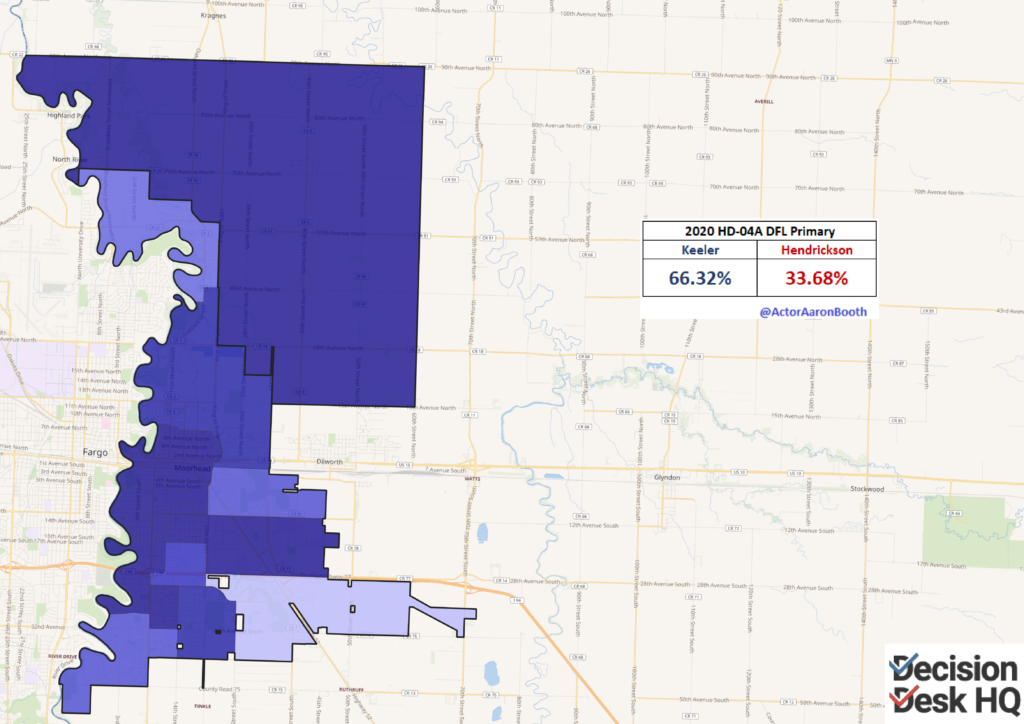
On the Republican side of the state legislature, the party filled a series of competitive open-seat primaries in HD-38A (which could potentially be competitive this cycle for the general), HD-23A and HD-55A (a seat the DFL flipped in 2018 that the GOP needs to win back to have a chance to flip the chamber).
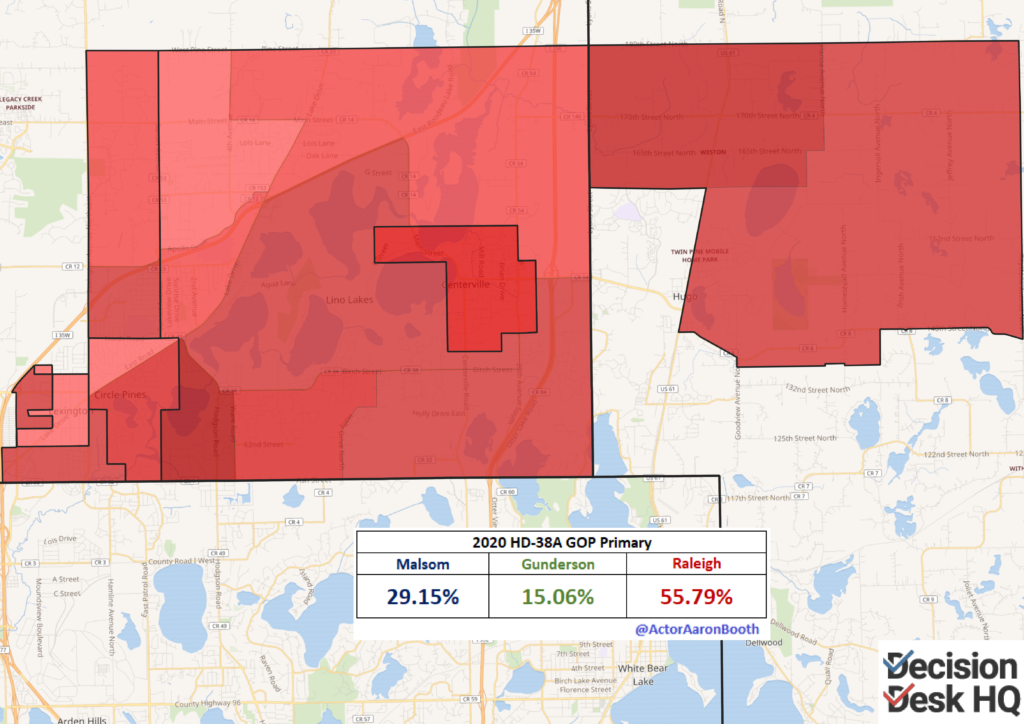
In HD-55A, GOP endorsed Erik Mortensen defeated former State Representative Bob Loonan who represented this district from 2015-2019. In 2014 he won by 18 points, in 2016 by 12 before losing the district by 3.5 in 2018. The district voted for Trump by 4.5 in 2016, but backed Klobuchar, Smith, Walz and Simon in 2018.
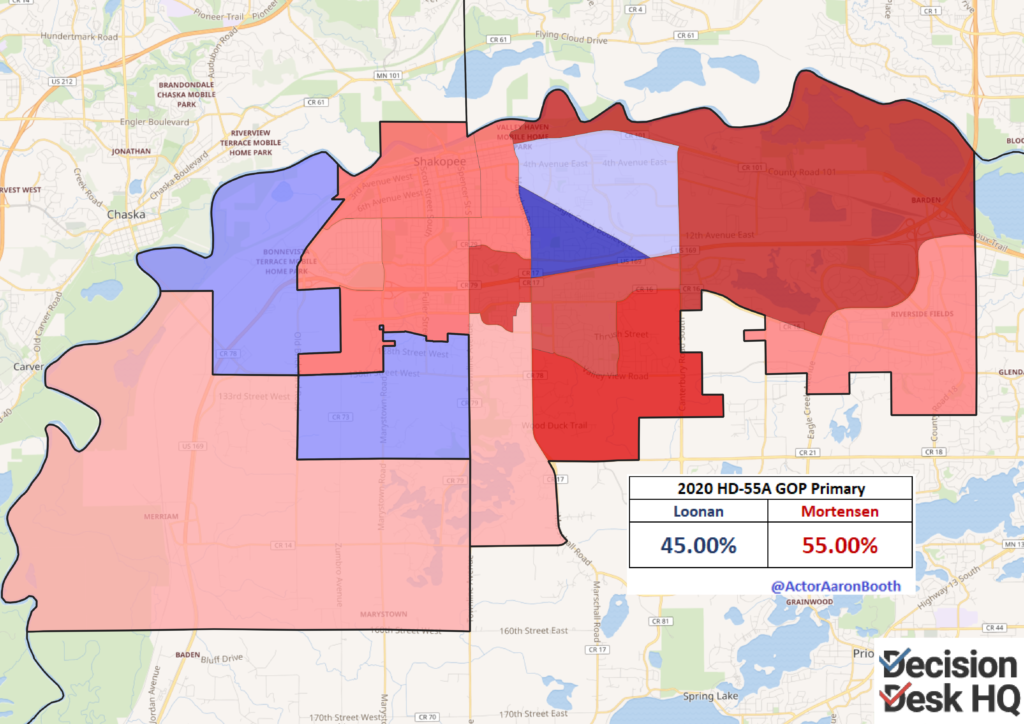
In Minnesota’s 13th largest city, Blaine in the north metro, voters are electing their first new mayor in two decades. Mayor Tom Ryan is retiring leaving an open race. Municipal races in Minnesota are technically nonpartisan, however many candidates have party ties. The best performing candidate in the August primary (from which the top two finishers advance to the November general election) is former Republican state legislator Tim Sanders. Sanders advances to the general against former Blaine City Councilmember, Mike Bourke.
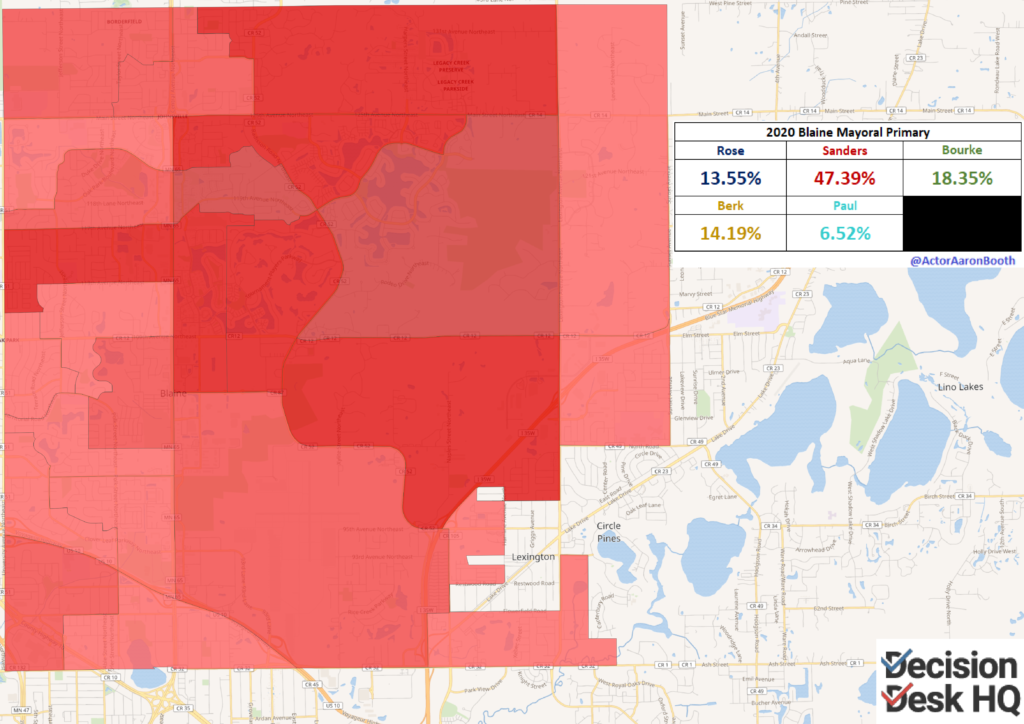
This week in Minnesota we have the Presidential candidate filing deadline and therefore we will get answers to whether candidates like Jorgensen, Hawkins, De La Fuente, Blankenship and Kanye West will appear on the ballot. Early voting in Minnesota starts on September 18th both in person and through the mail. Mail-in ballots will be counted so long as they are postmarked by election day and are received within 7 days and therefore in time for the county canvasses.
Aaron Booth (@ActorAaronBooth) is a contributor to Decision Desk HQ.